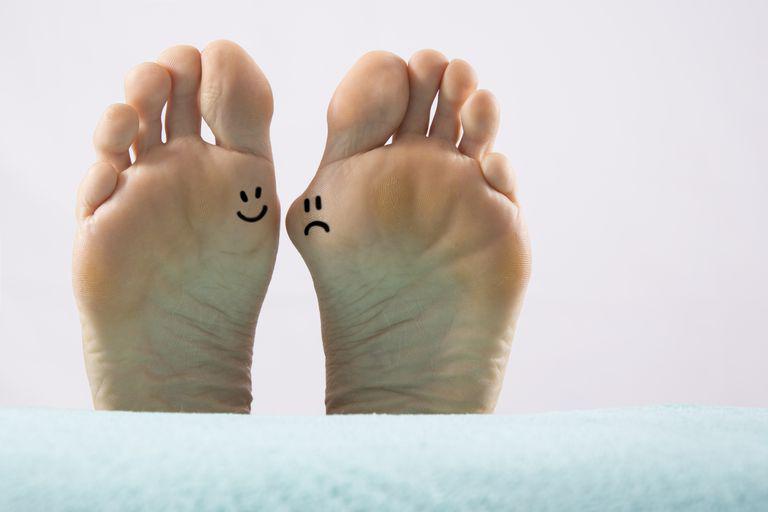
If you’ve got a bunion (or two), you’re not alone: As it turns out, bunions (or hallux valgus, if you’re into Latin) are the most common type of foot deformity, occurring in about 23 percent to 35 percent of adults. What’s more, they tend to become even more common as we age. With their characteristic bulge at the base of the big toe, bunions can cause a lot of discomfort, and in some cases, they can make it difficult to find shoes that actually fit the contours of your foot. In fact, the only good thing that can be said for bunions is that they often can be treated conservatively, with nonsurgical approaches designed to lessen stress on your big toe. But before treatment can begin, you need to know what’s causing your bunions in the first place.
Genetics vs. lifestyle: What’s causing your bunions?
Bunions form when pressure on your big toe causes the toe joint to become deformed. (Occasionally, a small bunion — called a bunionette or tailor’s bunion — can form at the base of the little toe.) Over time, as pressure on the toe continues, the base of the big toe joint (also called the metatarsophalangeal (MTP) joint) moves outward and out of its normal alignment, forming a lump or bump on the inner edge of your foot where the big toe bone meets the rest of the foot. At the same time, the bones of the big toe are pushed inward, toward the other toes. In severe cases, the big toe may actually cross over the other toes, resulting in a major deformity as well as problems with walking and other movements. Even when a bunion is not that severe, pressure on the stressed and deformed joint can cause considerable pain when your foot flexes while walking, running or even standing still.
That’s how bunions form; now here’s why they form. Lifestyle factors are the most obvious culprit. Many bunions form as a result of the type of shoes we wear. Shoes that have a very narrow toe space tend to squeeze and crowd toes, forcing the big toe into an angle that coaxes the joint out of its normal alignment over time. High heels can also cause bunions because they force the toes downward into the toe area. The risk is magnified when high heels also have narrow or pointy toes. In addition to shoes, spending a lot of time on your feet can sometimes make a bunion worse, and people with inflammatory conditions like arthritis and some neuromuscular conditions are also more likely to develop bunions.
Although ill-fitting shoes are a primary cause of bunion formation, most people who have bunions also have a genetic or inherited predisposition for the deformities. As it turns out, bunions are far more common among people with specific foot shapes or characteristics, like loose ligaments (fibrous bands that connect one bone to another in a joint), an unusual foot shape, flat feet or other arch problems. People whose foot bones have more rounded ends may also be more prone to bunions since the round end means the joint may be less stable, especially during flexion. Since foot shape is an inherited trait, that means some people are just more prone to bunions than others.
For bunion sufferers, the answer to what caused their bunions is twofold: The underlying cause may be a result of their inherited foot shape, but the actual trigger that causes the bunion to develop could be their lifestyle, including the type of shoes they wear, their occupation or other modifiable factors. Obviously, there’s not a lot you can do about your inherited foot shape. But modifiable factors can be changed. Often, bunions can be treated conservatively, by changing the types of shoes you wear, incorporating special exercises, or wearing custom orthotics designed to relieve stress on the joint. Dr. Kleis will work with you to develop a plan of action based on your symptoms and your needs.
Get relief for your painful bunions
As a top-ranked podiatrist in Costa Mesa, Jeffrey Kleis, DPM, is skilled in helping patients find the solutions they need to relieve pain and restore normal, comfortable movement. To learn more about the safe, effective bunion treatments he offers, book an appointment online today.
